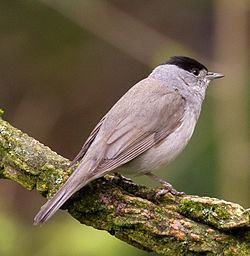Order Passeriformes Rank Superfamily | Phylum Chordata Suborder Passeri | |
 | ||
Lower classifications Sylviidae, Typical warbler, Eurasian blackcap, Vinous‑throated parrotbill | ||
The Sylvioidea are a clade of passerine birds, one of at least three major clades within the Passerida along with the Muscicapoidea and Passeroidea. It contains about 1300 species including the Old World warblers, Old World babblers, swallows, larks, bulbuls, and perhaps the tits. Members of the clade are found worldwide, but fewer species are present in the Americas.
Contents
Systematics
The superfamily Sylvioidea was first proposed in 1990 in the Sibley–Ahlquist taxonomy of birds. More recent studies have failed to support the inclusion of some families such as the treecreepers, wrens and allies but do support the addition of the larks.
Some of the families within the Sylvioidea have been greatly redefined. In particular, the Old World warbler family Sylviidae and Old World babbler family Timaliidae were used as wastebin taxa and included many species which have turned out not to be closely related. Several new families have been created and some species have been moved from one family to another.
List of families
It is not yet certain if the three families above belong in the Sylvioidea and they are sometimes treated as a separate superfamily, Paroidea.
The following groups form a single babbler radiation and it is not yet certain how many separate families should be recognized. Gelang et al. proposed a division into two families, Sylviidae and Timaliidae, with Timaliidae being divided into four subfamilies. The list of the International Ornithological Congress provisionally recognizes five families.
